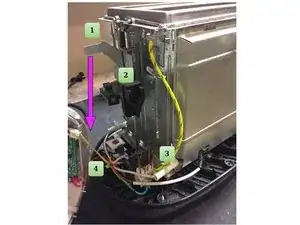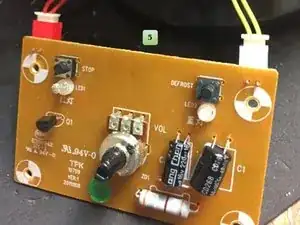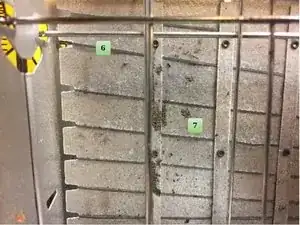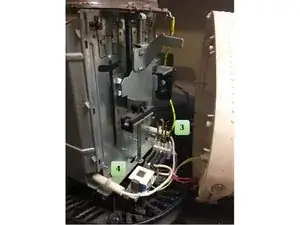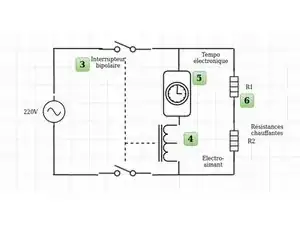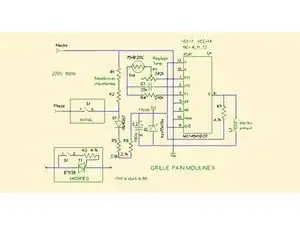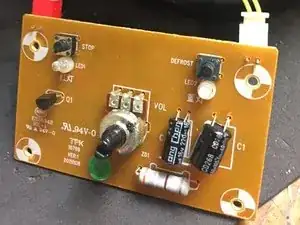Einleitung
We are looking here at the various components that make up the toaster, understanding their purpose, how each of them works individually, and, also, how they interact with each other.
The following article should also be useful.
-
-
When lever 1 moves down, it lowers the basket containing the bread as well as a cam labelled 2. When this cam arrives at the end of the rail, it gets in position in between the two copper plates of the bipolar switch labelled 3.
-
These two copper plates are used to power on the toaster.
-
If the toaster is plugged in, the lever is held down by an electro-magnet 4. Time setting of the magnet is chosen using the button placed on top of the toaster actuating the electronic timer 5
-
To toast bread, the device has a network of heating elements 6 placed on both sides of the basket on insulating plates 7. The elements are powered when the lever is held down.
-
-
-
When the lever is lowered, the contact pads of the bipolar switch 3 are closed. This allows the network of heating elements6, the electronic card 5 and the electromagnet 4 to be turned on.
-
When the electromagnet is powered, it keeps the lever lowered. This process is controlled by the timer on the electronic card.
-
When the time is up or the "stop" button is pressed, the timer releases the electro-magnet, which lets the lever rise with the tension of the spring and brings up the basket with the toasts inside. The toaster's circuit is then off.
-
-
-
This is an example of an electronic diagram of a toaster timer. The manufacturers use various assemblies often based on a frequency oscillator and a timer. The setting of the time is done with a potentiometer (P1 here).
-
Now that we know what our appliance does, and we understand the sub-assemblies and how they work, we can proceed to the repair stage with the following tutorial: "Grille-pain, les pannes fréquentes" or "Toasters: Common Problems".
